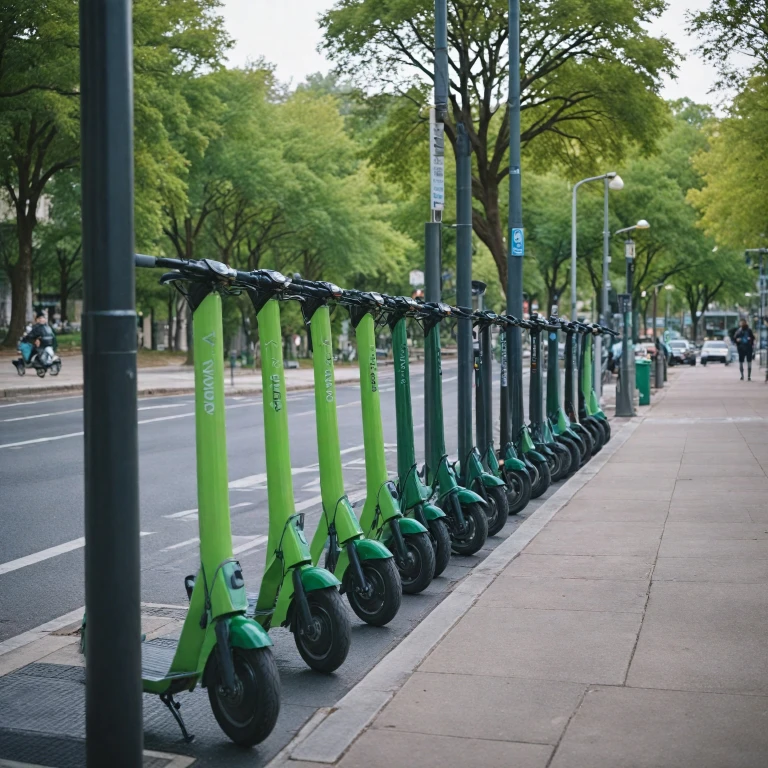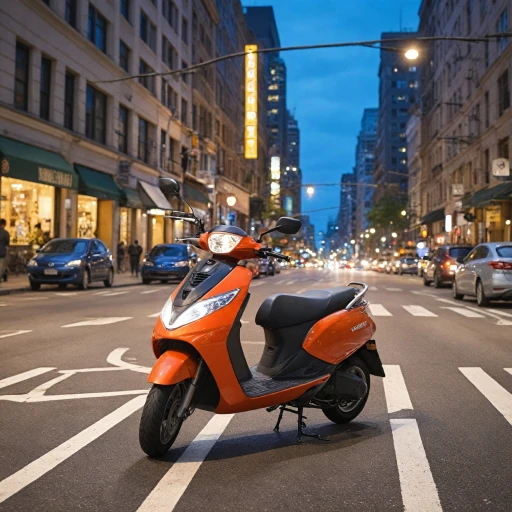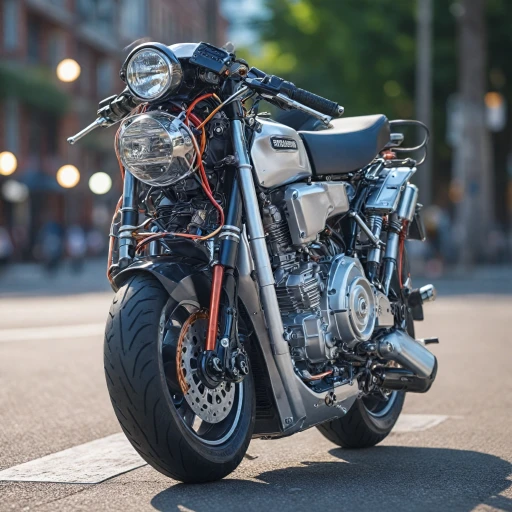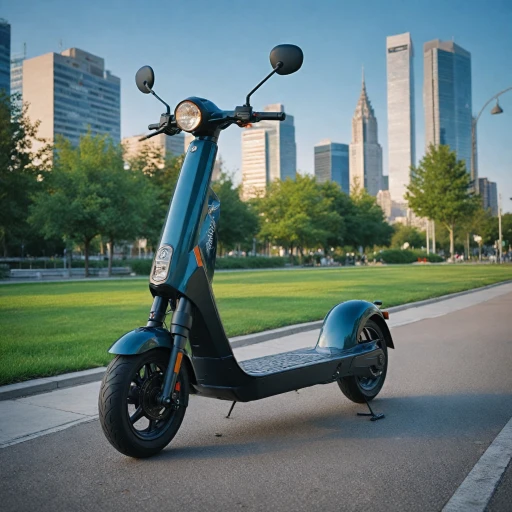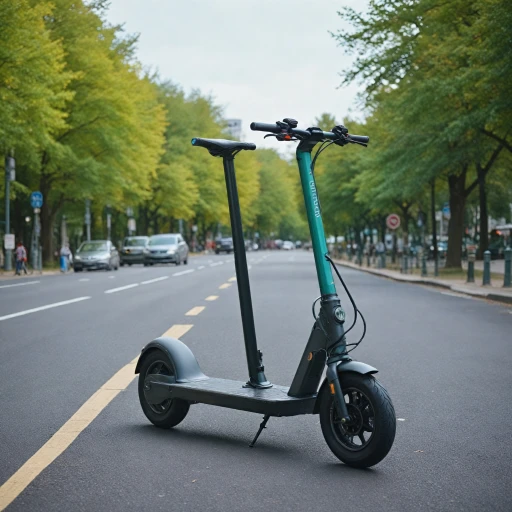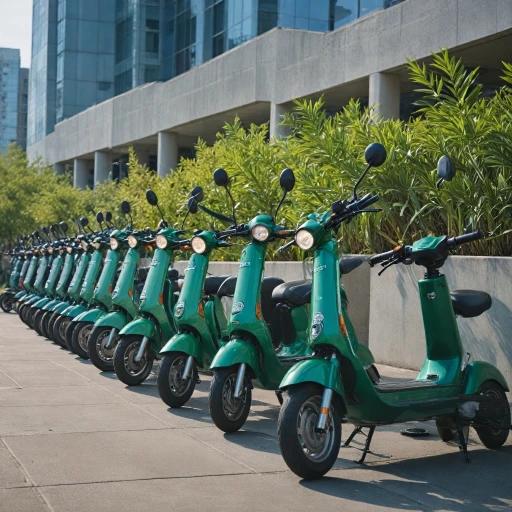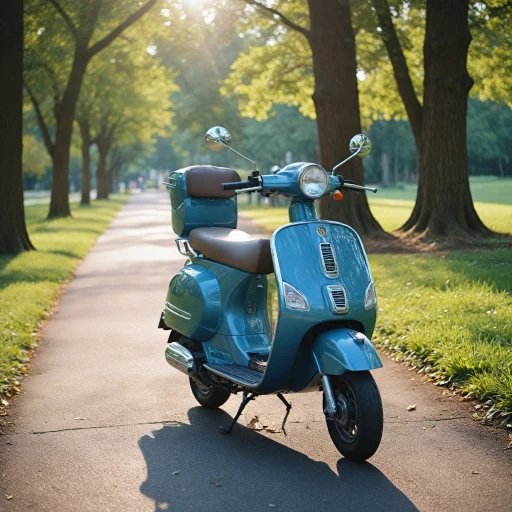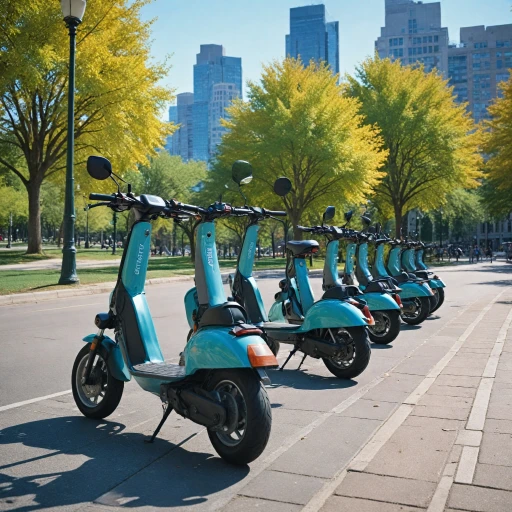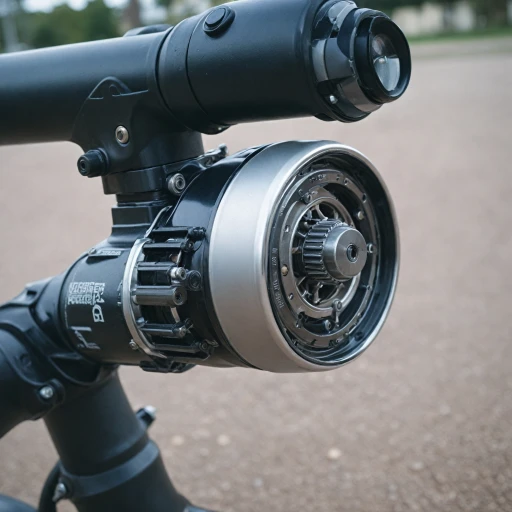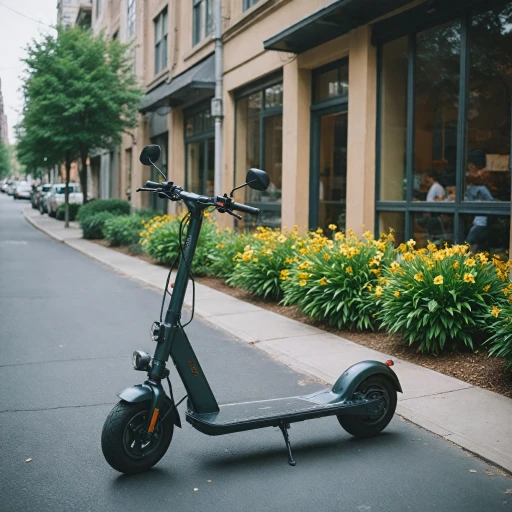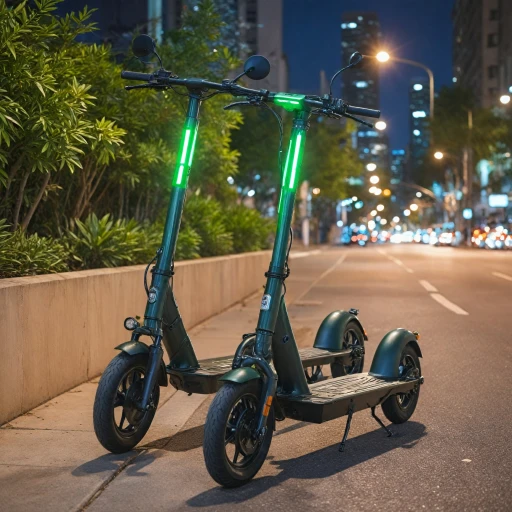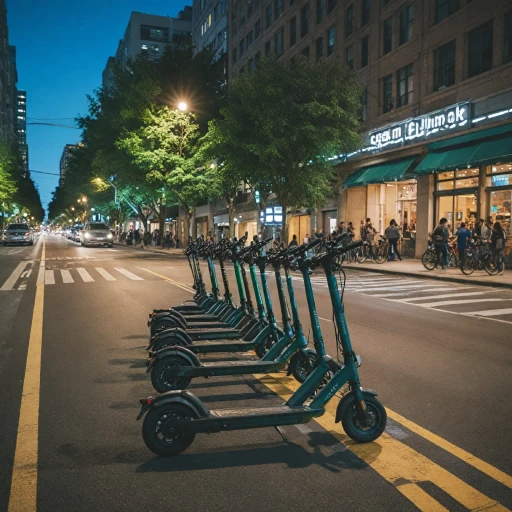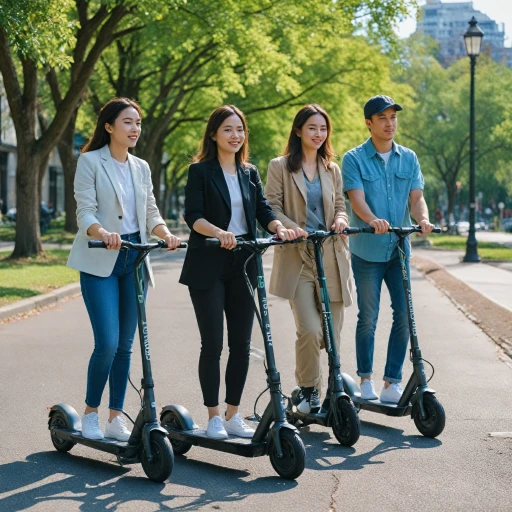
Understanding E-Scooter Battery Types
The Basics of Scooter Batteries
When diving into the world of electric scooters, understanding the different types of batteries is essential. You’ll commonly encounter lithium-ion and lead-acid batteries. Each has its unique characteristics and functions, impacting how you charge and maintain your electric scooter.Lithium-Ion vs. Lead-Acid: What’s the Difference?
- Lithium-Ion Batteries
- Advantages: They are lighter, have higher energy density, and longer battery life.
- Disadvantages: They tend to be more expensive and may suffer from damage if not charged correctly.
- Lead-Acid Batteries
- Advantages: These are cheaper and more robust when dealing with overcharging.
- Disadvantages: They are heavier, have lower energy density, and shorter lifespan.
Understanding Battery Capacity and Life
Battery capacity is a crucial aspect of any electric scooter. It determines how far you can ride on a single charge. Generally, the larger the battery capacity, the longer distance you can cover. However, charging time will also increase as the battery capacity grows. To maximize your scooter battery's potential, it's vital to adhere to best charging practices, which ensure your battery fully charges efficiently without any unnecessary strain. Don't forget, keeping an eye on the condition and capacity of the battery will help you understand when it might require replacement, ensuring your scooter maintains its performance over time. For more in-depth knowledge on battery types and how they impact electric scooters, check out this link on the power behind battery-charged scooters. Proper knowledge of these battery fundamentals is the first step towards ensuring optimal scooter charging and enhancing battery life.Best Practices for E-Scooter Charging
Optimal Charging Techniques for Prolonged Battery Health
Ensuring the longevity of your electric scooter's battery is crucial for uninterrupted rides. Starting with the correct battery handling techniques, you can extend the life of lithium ion and lead acid batteries, ensuring you get the most from each charge.
- Always use the manufacturer-recommended charger. Using a charger not specifically designed for your scooter's battery can cause inefficiencies and even damage.
- Check the charging port and plug charger into a stable outlet. This ensures a consistent flow of electricity, reducing the risk of overcharging or failing to fully charge the scooter.
- Maintain a regular charging schedule. Don’t let the battery deplete completely often, as this might reduce its lifespan. Instead, charge it after every significant ride to keep it ready and at peak capacity.
- Monitor the battery light, which will indicate when charging is complete. Unplugging the charger promptly prevents unnecessary power drain and potential damage.
An important consideration for maintaining your electric scooter's battery health is to avoid leaving it plugged in for too long after it is fully charged. This can lead to overheating and reduced battery life. Checking on your scooter during charging and unplugging it when your battery is fully charged can save you from unwanted hassle. Moreover, keeping your scooter in environments at moderate temperatures can protect its battery from heat damage, which is discussed further in the section on how weather affects charging.
Common Charging Mistakes to Avoid
Avoiding Pitfalls in Charging Practices
Charging your electric scooter might seem straightforward, but certain common errors can undermine the performance and longevity of your battery. Let's delve into what to avoid to keep your ride seamless and efficient.
- Overcharging the Battery: Constantly leaving your scooter plugged in after it's fully charged can lead to reduced battery life. Modern scooters often have lithium-ion batteries equipped with built-in protections, but it's still wise to unplug the charger once fully charged.
- Ignoring Battery Capacity: It's essential to know your scooter's battery capacity and charging limits. Overlooking this can cause you to either undercharge or overstrain the battery, negatively affecting performance and lifespan.
- Using the Wrong Charger: Always use the charger provided with your scooter, as mismatching voltages can damage the battery, leading to potential safety hazards.
- Charging in Extreme Temperatures: Whether it's too hot or too cold, improper weather conditions can affect how your battery charges. Aim to store and charge your scooter within the optimal temperature range specified by the manufacturer.
To optimize your scooter charging practices, it's also important to regularly understand the intricacies of your scooter battery. Knowing the charging port locations, types of chargers used, and variations between lead-acid and lithium-ion options will help you keep your electric scooter in top-notch condition.
How Weather Affects E-Scooter Charging
Weather Influence on E-Scooter Charging Efficiency
Electric scooters rely heavily on their battery systems, and charging these batteries is a process sensitive to environmental conditions. One aspect that can greatly affect the efficiency of charging your e-scooter is the weather. Firstly, temperature plays a crucial role in how well your e-scooter battery charges. Extreme temperatures, both hot and cold, can significantly impact the charging process and overall battery life. During colder months, lithium-ion batteries discharge quicker and may take a longer time to get fully charged. Conversely, excessive heat could lead to overcharging or damage battery health, reducing its lifespan. Humidity is another weather factor that can influence the charging efficiency of electric scooters. High humidity levels, especially when combined with heat, might cause condensation inside the charging port or plug charger, leading to potential malfunctions. It's important to keep the charging environment dry and well-ventilated. To protect the scooter battery from adverse weather impacts, try these best practices:- Charge your scooter indoors where temperature and humidity are more controlled.
- Avoid exposing the battery to direct sunlight or rain when charging the scooter.
- If you live in an area with extreme weather conditions, consider wrapping the battery with an insulated cover to maintain consistent temperature levels.
- Regularly check the charger light to ensure the charger is functioning properly under different weather conditions.
Innovative Charging Solutions
Flexible and Efficient Charging Solutions
In the ever-evolving world of electric scooters, innovative charging solutions are cropping up to offer more flexibility, efficiency, and environmental benefits. As more riders embrace the electric era, there's a natural push towards enhancing the charging experience. One major development is the integration of fast-charging technology. Although many electric scooters still rely on traditional chargers that take several hours to fully charge a battery, fast chargers can significantly reduce this wait time. These chargers use higher currents and advanced charging techniques that ensure your battery is ready to go in a fraction of the time. However, it's crucial to check if your scooter’s battery is compatible with such technology to prevent damage. Battery swapping stations are another cutting-edge solution that's gaining traction in urban areas. These stations allow riders to exchange a depleted battery for a fully charged one in moments, eliminating the downtime associated with charging. It's a solution particularly well-suited for high-density areas where e-scooters are heavily utilized for short rides. Furthermore, solar-powered charging ports are an eco-friendly option gaining popularity. These units harness renewable energy to charge scooters, providing a sustainable alternative for those looking to reduce their carbon footprint. Some advanced models even integrate small solar panels directly onto the scooter, allowing it to self-charge to a certain extent. As advancements continue, wireless charging is also on the horizon. This technology allows scooters to charge when aligned with a charging pad, offering an effortless experience. Although still in the early stages, it's poised to simplify the way scooters are charged in the future without the need for manual plugging. For those keen on optimizing their charging routine, it's beneficial to stay updated on these innovative solutions. They not only enhance convenience and safety but also prolong battery life and improve the overall scooter experience.Troubleshooting Charging Issues
Diagnosing and Resolving Charging Hiccups
It's not uncommon for electric scooter enthusiasts to encounter charging issues. Understanding the intricacies of scooters, batteries, and chargers can help identify and tackle these problems efficiently. Let's delve into some common issues and how to address them:
- Battery Not Charging: First, check the battery's connection and ensure the charging port is clear of debris. Verify that the plug is securely connected and try a different charger if available. It's worth noting that lithium-ion batteries can sometimes go dormant if not charged for an extended period.
- Slow Charging: If your electric scooter is taking unusually long to charge, inspect the charger and ensure it matches the battery capacity. Always use the charger recommended by the manufacturer to avoid damaging the battery.
- Charger Light Issues: The charger's indicator light might not function correctly. Confirm that the battery itself is being charged. A fully charged scooter battery should allow for a normal ride duration.
- Lead-Acid Batteries: If your scooter utilizes lead-acid batteries, remember that they may require a different approach compared to lithium-ion batteries. They typically take longer to charge but ensure the battery is fully charged before starting your ride.
Being proactive can prevent many of these issues. Regularly inspect the charging equipment and the battery to maintain optimal scooter performance. Enjoy the ride with confidence by ensuring your electric scooter is always ready to go.
